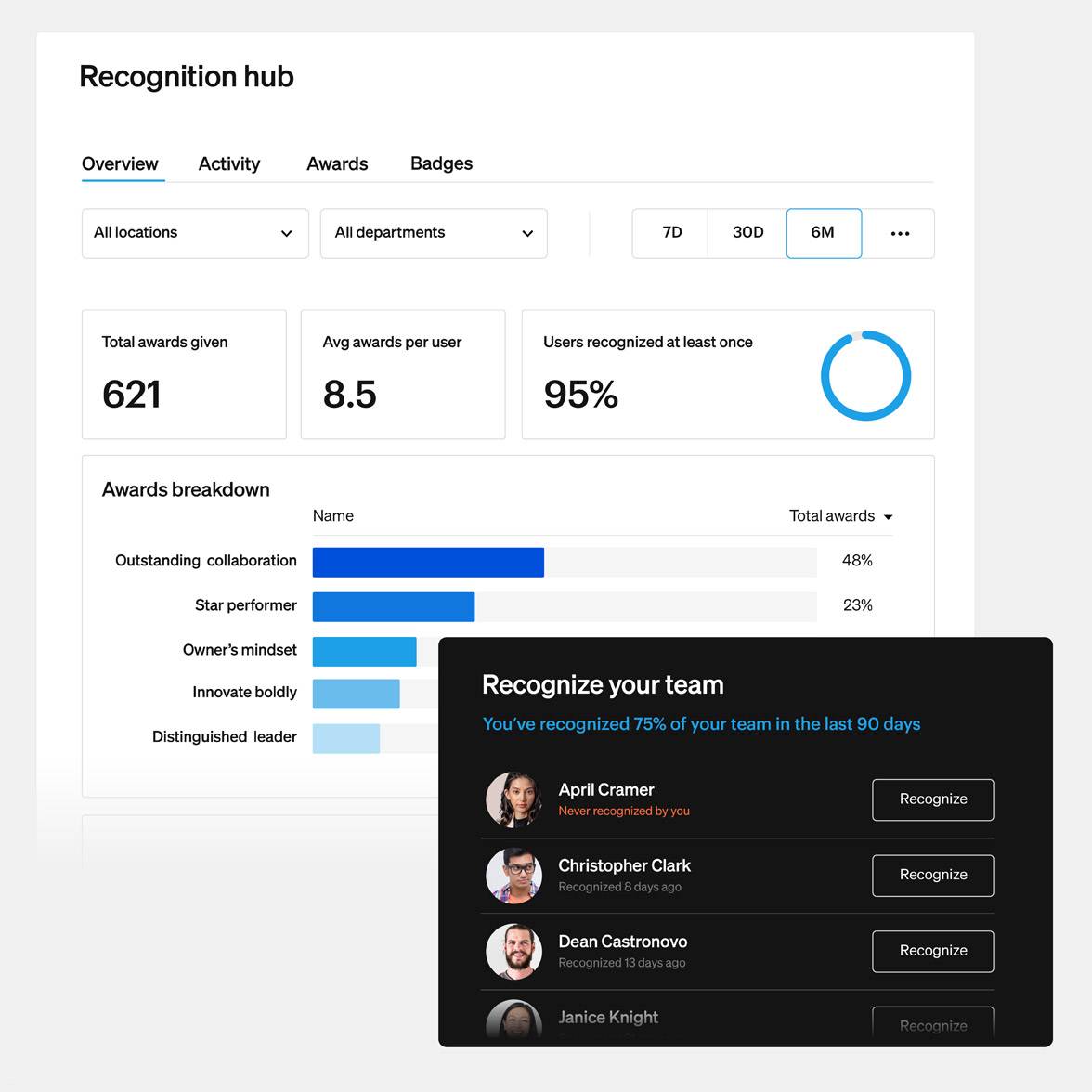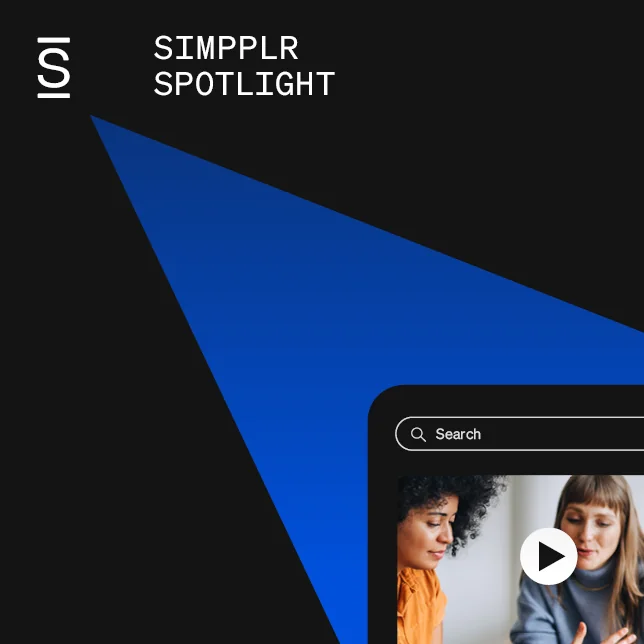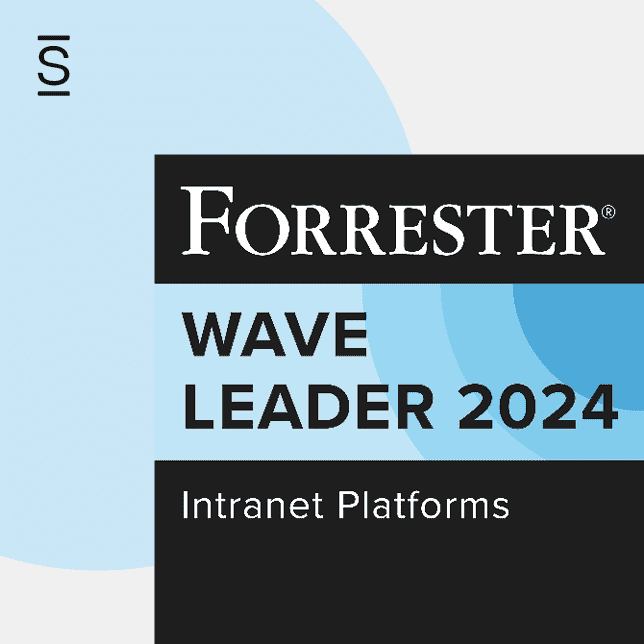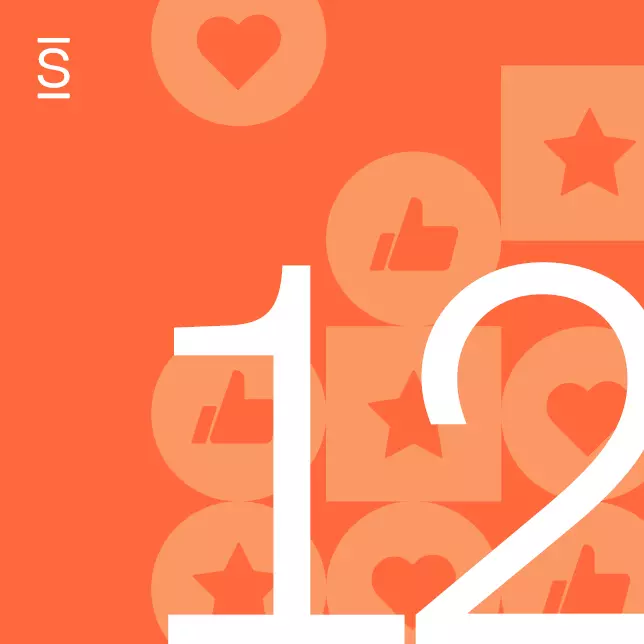As far back as 776 B.C., Olympic athletes competed in ancient Greece for fame, honor, and glory. City-states used the Games to assert influence and importance. Do you know what the only official reward for winning in the ancient Olympics was?
A crown of olive leaves. Not as valuable of an award as you might think for one of the biggest events in the ancient world.
Not that we think you should reward your Employee of the Month with an olive wreath. The point is that recognition and rewards can be effectively applied in different ways.
Keep reading to find out the benefits of employee rewards and recognition, the different types you can offer, and how to use them to boost employee engagement.
What are the benefits of employee recognition?
Employee recognition programs are an essential element of an employee value proposition, as they help to create a culture of appreciation and engagement that fosters a sense of belonging and motivation among employees. In a recent Gallup poll, about two-thirds of employees reported that they went all week without any form of recognition for good work. This statistic is staggering when you consider how beneficial employee appreciation can be.
These great outcomes highlight the importance of employee recognition:
- Employee engagement
- Increased productivity
- Reduced employee turnover
- Improved job satisfaction
- Positivity in the company culture
How does a little recognition make so much difference? By making employees feel confident, appreciated, and just plain happy. Happy employees make for higher profitability and a better bottom line.
Improve employee engagement
Employee engagement is essential for innovation and hard work, day in and day out. Engaged employees are much more likely to go the extra mile because they’re invested in success—for themselves, team members, and higher-ups alike.
Unfortunately, the last few years have taken a lot out of us. A survey from Indeed in 2021 reported that over half the workers who participated felt burnt out.
Employee burnout is the opposite of engagement, and it doesn’t look great. Disengaged employees put their jobs on autopilot, going through the motions of daily work without much thought or creativity.

The right recognition can show tired workers that you appreciate their efforts and rekindle a sense of pride on the job.
Boost productivity
The American Psychological Association estimates that 550 million workdays are lost every year across the US due to workplace stress.
On the flip side, positive feedback for good work consistently leads to better employee performance. It‘s a proven fact that recognition has a positive impact on the mood of employees. And happiness leads to 31% higher productivity, with 19% higher accuracy in completing tasks.
Happy employees who are recognized when they put their all into something are much more likely to do so again. It’s all about positive reinforcement, especially for Gen Z workers.
Raise employee retention rates
In a survey of 1500 employed Americans, 63% of the people who said they were ‘always’ or ‘usually’ recognized at work also said that they were ‘very unlikely‘ to look for a new job in the next 3-6 months.
By comparison, almost half of the people who didn’t feel recognized were ‘extremely likely‘ to look for work somewhere else.
Although ‘The Great Resignation’ might finally be slowing down, top talent will still leave their jobs for better opportunities if they don’t feel appreciated.
Create a company culture of job satisfaction
It‘s hard to separate positive company culture from job satisfaction. A culture of recognition that reflects good core values results in higher employee morale every time.
Recognition plays into company culture by showing employees that their efforts are contributing to shared goals. Believe it or not, that recognition doesn’t need to come from a manager. Sometimes it’s even better if it doesn’t.
There’s nothing better for strong teamwork than a culture of positive feedback in which teammates freely recognize and appreciate each other’s efforts. People Matters reports that 90% of workers enjoy greater workplace satisfaction when they receive peer-to-peer recognition.
What are the different types of recognition?
Employee recognition can be as simple as a boss telling their employee, “Good job!” Sometimes this casual, informal approach works wonders. But there are other forms of recognition and other distinctions that serve different purposes.
In choosing employee recognition software and tools or designing a recognition system, be sure to keep each of these 4 factors in mind for a versatile system that can achieve maximum results.
1. Recognition by peers vs superiors
When a higher-up praises an employee’s efforts, it validates the employee’s work and creates a sense of job security. That keeps employees feeling confident and invested in their work.
But happiness and teamwork are improved by a sense of camaraderie between teammates. That‘s why peers provide some of the most effective recognition employees get. In fact, research by Gartner shows that peer recognition can boost an employee’s productivity by up to 14%.
Bottom line. The right work environment encourages both peer and superior recognition for a positive employee experience.
2. Public recognition vs private recognition
Different personality types prefer recognition in different settings. For some, recognition is most valuable when there’s an audience. These people may want a shout-out at the next all-hands meeting or to be mentioned on official social media pages.
On the other hand, there are plenty of people who find the spotlight of public recognition to be uncomfortable and overwhelming.
Think back to past birthday dinner outings. At some point, you’ve probably had the restaurant staff reluctantly sing you ”Happy Birthday” while every other customer impatiently waits to get back to their conversations. That’s how some employees feel about recognition at work.
These types of people would rather have a one-on-one conversation, a message, or some other low-key signal that their hard work is appreciated.
Bottom line. Managers should take individual differences into account when choosing between public and private recognition, and recognition systems should provide both public and private channels for appreciation.
3. Attributed recognition vs anonymous recognition
Most of the time, it should be clear where recognition is coming from. Knowing who’s offering the praise is important because it provides context to the person receiving it.
“Whose perspective is this from? Why would they appreciate what I’ve done? What does that person mean to me?“ These questions can all change what recognition means to the receiver.
Still, anonymous recognition has its place. Work environments are complex social situations with a lot of nuances. Anonymous recognition can be useful when you’re trying to open up channels across siloed groups, encouraging people to recognize good work across departments.
It‘s also useful when the person offering the praise might not know who to thank. “Whoever turned in my wallet to the lost and found, thank you. That cash is for my kid’s birthday cake. You just made a 7-year-old kid extremely happy.”
When that kind of anonymous recognition is made publicly, even people who had nothing to do with it will come away feeling good about the people they work with.
Bottom line. Recognition should usually be attributed, but be sure to offer anonymous channels too so unknown appreciation can still be shared.
4. Rewarding behavior vs rewarding achievement
When we think about rewarding people or giving recognition, our first thought often goes to milestones like anniversaries, or achievements like completing a project long in the making. Recognizing these things is important. They represent tremendous effort and long-term dedication from employees.
What’s often overlooked, though, is offering positive rewards for behavior along the way.
Is there someone on your team who always has positive things to say about others? Is there someone who exemplifies the culture of appreciation you’re trying to establish? What about someone who pitches in and works outside their job description when someone else is out on leave?
Positive behavior is extremely valuable even when it doesn’t have huge, tangible results. Rewarding that kind of behavior shows people that you notice and appreciate those contributions, helping to solidify the company culture you’re trying to build.
Bottom line. Reward meaningful achievements, but reward behavior too. Positive reinforcement of great attitudes can help solidify the culture you want.
5. Financial rewards vs non-financial rewards
Monetary rewards include salary and bonuses as well as things like gift cards, home-office spending accounts, and recognition-based raises.
Non-monetary rewards include verbal recognition, an employee-of-the-month framed photo on the wall, or a special parking space.
Still, don’t get too hung up on this category. The lines can get blurry. Is paid time off monetary or non-monetary? What about career development opportunities?
The first key to any financial reward system is to make sure everyone is being compensated for their work fairly. Don’t underpay people and then expect them to compete for bonuses to get paid what they deserve. This approach will quickly backfire, and you’ll lose good employees.
Lay a foundation of fairness first, before you offer extra incentives.
Even then, don’t just throw money at the problem. Non-monetary recognition is incredibly important. It can help compensate your team for the emotional cost of constant hard work.
Frequent, genuine compliments can go a long way to show employees that their efforts are recognized and appreciated.
Bottom line. Start with equitable, competitive compensation for everyone. Then, if you want to add financial incentives, make sure employee peers have an equal opportunity to earn them. But don’t forget about non-monetary rewards too—especially for emotional commitment.
How (and when) should you reward and recognize employees?
The most effective way to use recognition depends on the people and the situation involved. The right recognition system will be flexible enough to let you practice and encourage them all.
Still, the key to effectively using any incentive approach is acting immediately. There’s a short window of opportunity to reward someone for their efforts before the effect starts to diminish.
So, what if you only think of it later? Should you let it go, or should you offer the reward anyway and risk looking insincere?
Here’s the key—offer the reward sincerely, and be vulnerable enough to admit that you wish you had offered it sooner.
They‘ll appreciate your honesty, and you’ll be setting a precedent for a culture of trust as well as a culture of recognition at the same time.
What are some examples of recognition-based awards?
Use any of the ideas below, or let these lists spark your own. The more unique your rewards are to your organization and culture, the better!
Ideas for recognition from managers and executives
- A one-on-one lunch with a company leader
- A special mention in the internal employee newsletter
- A LinkedIn endorsement
- A project milestone celebration
- Career development opportunities
Ideas for recognition from peers or coworkers
- Handwritten notes
- Endorsement to managers
- Attribution for efforts during meetings and reviews
- A dedicated hashtag on your company intranet
Ideas for public recognition programs
- A section on the website’s ”About Us” page showcasing exemplary employees
- Recognition trophies personalized with the employee’s name
- A company newsletter section dedicated to employee profiles
- A relationship with the local newspaper or radio station for employee stories
Ideas for anonymous recognition programs
- A wall at work for posting thank-you notes
- An anonymous thank-you box for a section in the company newsletter
- A dedicated page or hashtag on your company intranet
What’s the best reward for employee recognition?
There are no one-size-fits-all answers to this question. Consider your business, company values, and goals carefully. These should give you some insight into the best options for your unique situation.
Most of all, invite your employees to be key contributors in designing your employee recognition program. They know your business, and they know what will make them feel appreciated.
Just remember to think through new programs from different angles.
For example, your business may have workers in different countries. If you’re using monetary rewards like gift cards or prepaid debit cards, there’s a very high chance those rewards will be geographically locked. Mistakes like this can be easily misconstrued to mean the recognition wasn’t genuine, and therefore their work isn’t really valued.
Along the same vein, clothing comes with size limitations. Inscribed champagne flutes make terrible gifts for a recovering alcoholic. And about one in every hundred people is deathly allergic to nuts.
In other words, make sure the rewards you’re offering are either universal enough or flexible enough to appeal to everyone.
Making public recognition go further
Public recognition doesn‘t have to be limited to in-person company events. With some 4.7 million people in the US working remotely at least half the time, traditional public recognition might end up falling short.
If you want your recognition program to drive employee engagement, consider a digital employee intranet that‘s as easy to use as today‘s social media platforms.

Digital feeds can be harnessed to notify your entire organization, specific regions, or even specific job functions about employee achievements and milestones. This modern approach is much more accessible, easy to implement, engaging to employees, and far less intrusive in day-to-day operations.
To see how a smart intranet solution can help you build a unique employee recognition program and drive engagement across multiple, diverse teams, request a demo today.

















